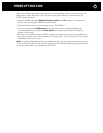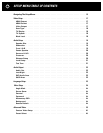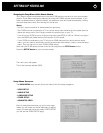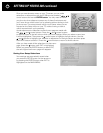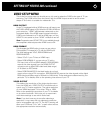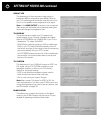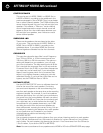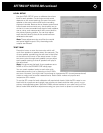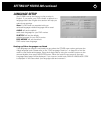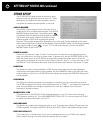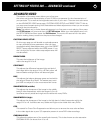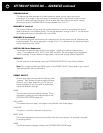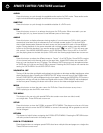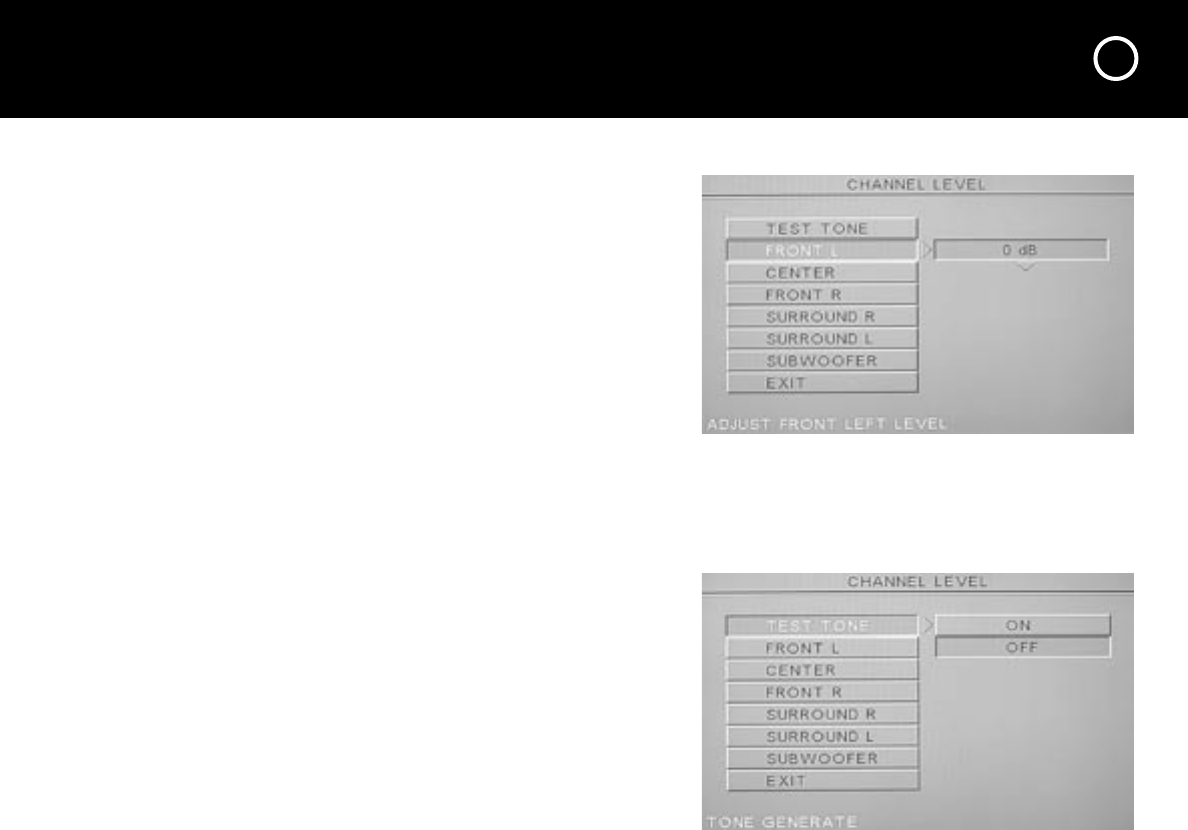
21
LEVEL SETUP
Use the LEVEL SETUP menu to calibrate the volume
level for each speaker. Convincing surround sound
depends on the sound reaching your ears from each
speaker at the same volume level as the recording
engineer intended. Because home theater systems and
home theater environments vary, the simplest way to
do that is to send a standard test signal to each speaker,
one at a time, and measure each one’s sound level at
the primary listening position. You can then adjust
each channel’s level so that all the sound levels are
calibrated to be equal.
Note: These adjustments do not effect the coaxial
and optical digital outputs. Only the analog audio
outputs are effected.
TEST TONE
Press this button to start the test noise which will
cycle from speaker to speaker every few seconds. The
current speaker reproducing the test tone is identified
at the bottom left corner of the setup screen. As the
test tone cycles through each speaker you can adjust
each speaker setting so that all speakers will play at
the same level.
Note: You cannot set the level for any speakers set to
NONE or NO in the SPEAKER SIZE setup page.
You can match speaker levels to each other with
reasonable accuracy just by listening to the D 200’s
SETTING UP YOUR D 200 continued
test tone. However, you might wish to purchase an inexpensive SPL (sound-pressure-level)
meter to make more accurate measurements. Radio Shack makes two popular and
inexpensive SPL meters.
To use the SPL meter for level calibration will require both hands. Hold the SPL meter in one
hand with its microphone end upright, near where your head would be when you sit in your
primary viewing/listening seat. Hold the D 200’s remote handset in your other hand; you’ll be
able to make level calibration adjustments using just your thumb to press its cursor buttons.



